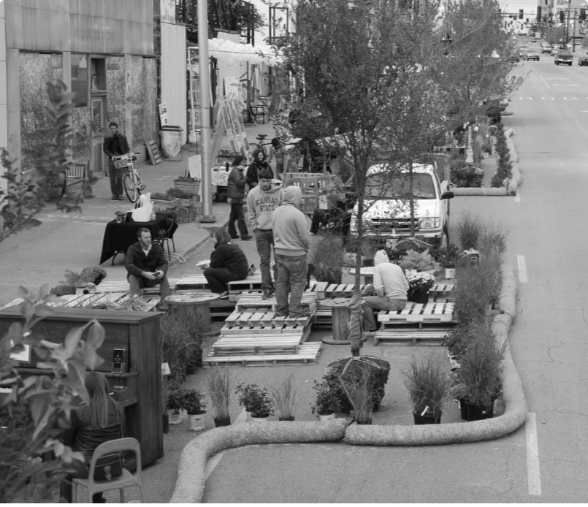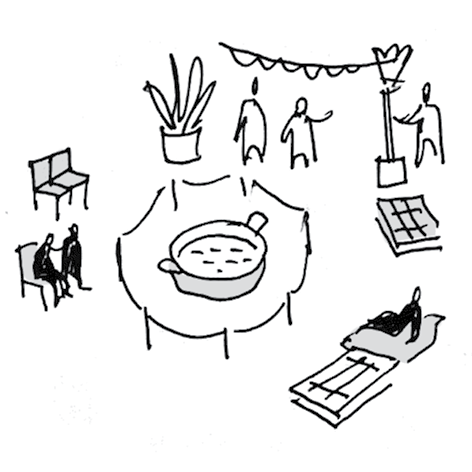…In making urban changes to the Walkable Streetscape or other features, it is helpful to be able to do temporary structures that help to mock up the results.

__Problem-statement: How can changes to the neighborhood design be tested and accepted by stakeholders before commitments are made and significant expenditures are committed?__
Discussion: An approach that has proved successful is to create mockups of the changes that are proposed. These can be done with large stakes, flags, styrofoam panels, colored string stretched on the ground, or temporary paint on the surface of pavement areas.
One example is known as the Better Block project. Where changes are proposed to the streetscape to enhance pedestrian quality, proponents come in and make temporary and reversible changes, using paint, planters, seating, and other temporary changes. These can then be viewed and assessed — often with enthusiastic results, and commitment to more permanent changes.
This is more than just a tactical way to persuade stakeholders of the benefits of a proposed design — though it is that too. It is actually a sophisticated method of collective intelligence in design. The results of rapid trial and error in a community mockup can lead the way to the most adaptive new structures that could be erected, far better than any professional design carried out on a remote computer screen. Designs checked and adjusted on site by such simple methods will work best in actual use after they are built, because an enormous number of factors have already been tested.¹

Community residents create a mockup of streetscape improvements in Kansas City.
A related approach is to use augmented reality to create images that are visible on smartphones and other GPS-sensitive devices — see Augmented Reality Design. In the same way, different design ideas can be generated and tested very quickly, allowing a group of stakeholders to view them in real time.
__Therefore: Use community mockups to simulate the changes that are proposed, using temporary materials such as stakes, fabric, washable paint, and movable elements, or using augmented-reality technology.__

Use Augmented Reality Design tools to assist residents with visualization and collaboration in developing design ideas. …
notes
¹ An example of this process in practice is given in Radywyl, N., & Biggs, C. (2013). Reclaiming the commons for urban transformation. Journal of Cleaner Production, 50, 159-170.
See more Implementation Tool Patterns